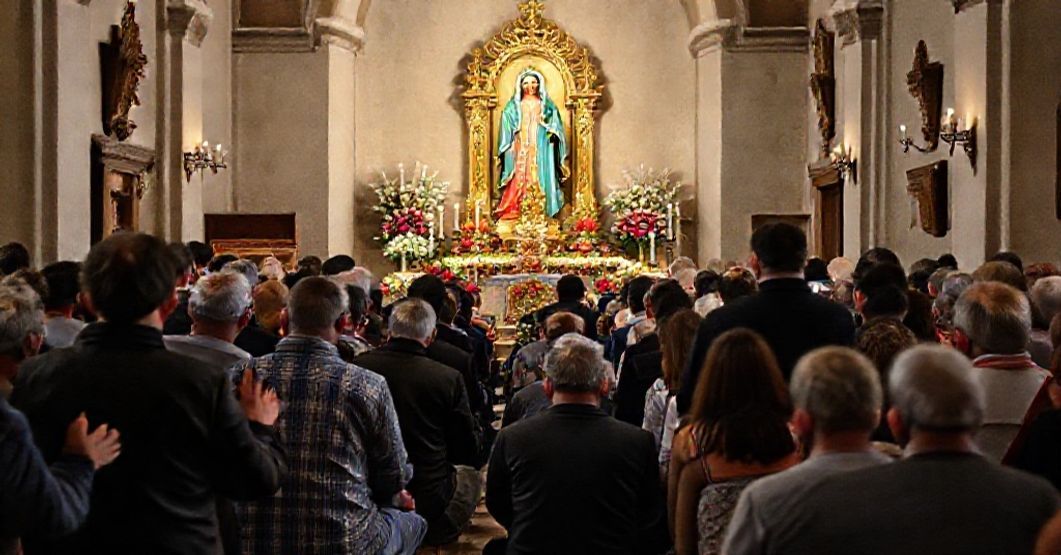Antipopes of the Antichurch



















Timeline of this heretical pontiff
Encyclical Letters
+ 15 posts1959
+ 7 posts1961
+ 4 posts1962
+ 2 posts1963
+ 2 postsApostolic Exhortations
+ 3 postsApostolic Constitutions
+ 93 posts1958
+ 6 posts1959
+ 87 postsMotu Proprio
+ 15 posts1958
+ 1 posts1959
+ 1 posts1962
+ 11 postsApostolic Letters
+ 151 posts1958
+ 4 posts1959
+ 63 posts1960
+ 78 posts1961
+ 1 posts1962
+ 4 posts1963
+ 1 postsSpeeches
+ 99 posts1958
+ 2 posts1959
+ 26 posts1960
+ 29 posts1961
+ 16 posts1962
+ 24 postsMessages
+ 6 posts1959
+ 4 postsHomilies
+ 4 postsLetters
+ 152 posts1958
+ 1 posts1959
+ 48 posts1960
+ 32 posts1961
+ 31 posts1962
+ 30 posts1963
+ 10 postsNot categorized
+ 1 posts1958
+ 1 postsNews feed


Potiora inter (1959.05.23)
The document under consideration is an apostolic letter of John XXIII, dated 23 May 1959, entitled “Potiora inter,” by which he declares the image of the Blessed Virgin Mary venerated as “Nuestra Señora de El Soto” at Iruz to be solemnly crowned and confirms/constitutes her as principal heavenly Patroness of the region of Toranzo (thirty localities in the Diocese of Santander). The text exalts the Marian shrine’s antiquity, its association with the Franciscan and then Discalced Carmelite communities, recounts its desecration during the Spanish Civil War and subsequent restoration, and then, appealing to local devotion, grants liturgical patronal status and authorizes a canonical coronation carried out in his name by the local ordinary.


Plantaria novella (1959.05.21)
The document titled Plantaria novella, dated 21 May 1959 and attributed to John XXIII, designates Saint Isidore the Farmer as the principal heavenly patron of the Diocese of San Isidro in Argentina. It clothes this act in pious language about new dioceses as “young plantings” needing special celestial protection so that ecclesial life may flourish, and then, invoking alleged apostolic authority, declares Saint Isidore Patron with the usual liturgical privileges, nullifying all contrary provisions.


Caritatis unitas (1959.05.04)
The document titled Caritatis unitas, issued by John XXIII on May 4, 1959, purports to approve and confirm a “Confederation, or Pact of Charity” among several Congregations of the Canons Regular of St Augustine (Lateran, Austrian, Great St Bernard/Mont-Joux, and Saint-Maurice of Agaunum). It exalts Augustinian common life, recalls the medieval canonical reforms, praises inter-congregational bonds, institutes the office of an “Abbot Primate” for the federated body, delineates principles of autonomy and cooperation, and bestows an appearance of Apostolic authority and perpetuity upon this structure, explicitly integrating it into the apparatus of the Roman Curia and securing a “Cardinal Protector”. It is, in outward form, a pious administrative act; in reality, it is a juridical and ideological prelude to the systematic instrumentalization and neutralization of religious life in service of the coming conciliar revolution.


Caritatis Praeconium (1959.05.03)
The document “Caritatis Praeconium,” issued in 1959 under the name of John XXIII, declares the Canadian foundress Marie-Marguerite Dufrost de Lajemmerais, widow d’Youville, as “Blessed,” extolling her life of charity, her foundation of the Sisters of Charity of Montreal (“Grey Nuns”), her trust in Providence amid sufferings, and her supposed posthumous miracles, and grants liturgical cult in specified territories and chapels. It presents her as “mother of universal charity” and proposes her as a model for the faithful, grounding this act in the alleged authority of the post-1958 Roman structures.
Varia
Announcement:
– News feed –implemented
– Antipopes separate web sites with their all documents refutation – in progress
